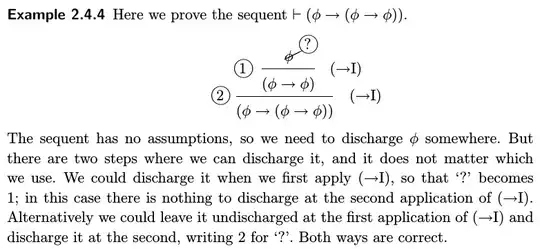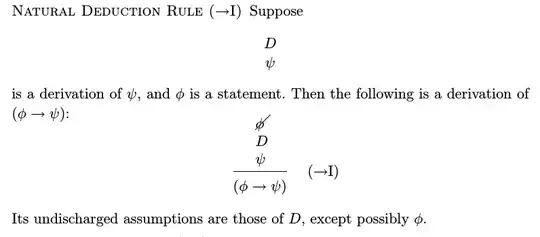By Sequent Rule (Axiom Rule), for $\Gamma = \{\}$, we have the sequent $\Gamma \cup \{\phi\} \vdash \phi$, so by Sequent Rule ($\rightarrow \textrm{I}$), we have $\{\} \vdash (\phi \rightarrow \phi)$. That is, we get the tautology $\phi \rightarrow \phi$ "for free" ($\phi$ having been introduced by assumption on the previous line).
Recall the text (p. 17, immediately following the definition of Sequent Rule ($\rightarrow \textrm{I}$)) "the assumption $\phi$ in the first sequent of the sequent rule ($\rightarrow \textrm{I}$) is allowed to drop out of the assumptions of the second sequent". Note "allowed" $\neq$ "required". This is discussed further in Remark 2.4.2.
Recall also the text (p. 17, prior to the definition of Natural Deduction Rule ($\rightarrow \textrm{I}$) "in forming the derivation we are allowed to discharge any occurrence of the assumptions $\phi$ written in $D$. The rule is still correctly applied if we do not discharge all of them; in fact the rule is correctly applied ... [if] there is nothing to discharge." This indicates (1) an assumption may appear more than once in a derivation, (2) applying the rule allows you to discharge all, any, or none of them, and (3) the rule may be applied even when all assumptions are discharged.
This third case is somewhat similar to the first paragraph above. If $\psi$ is something we can deduce and $\phi$ is any statement whatever, we can deduce $\phi \rightarrow \psi$ (because $\psi$ is already known to be true).

